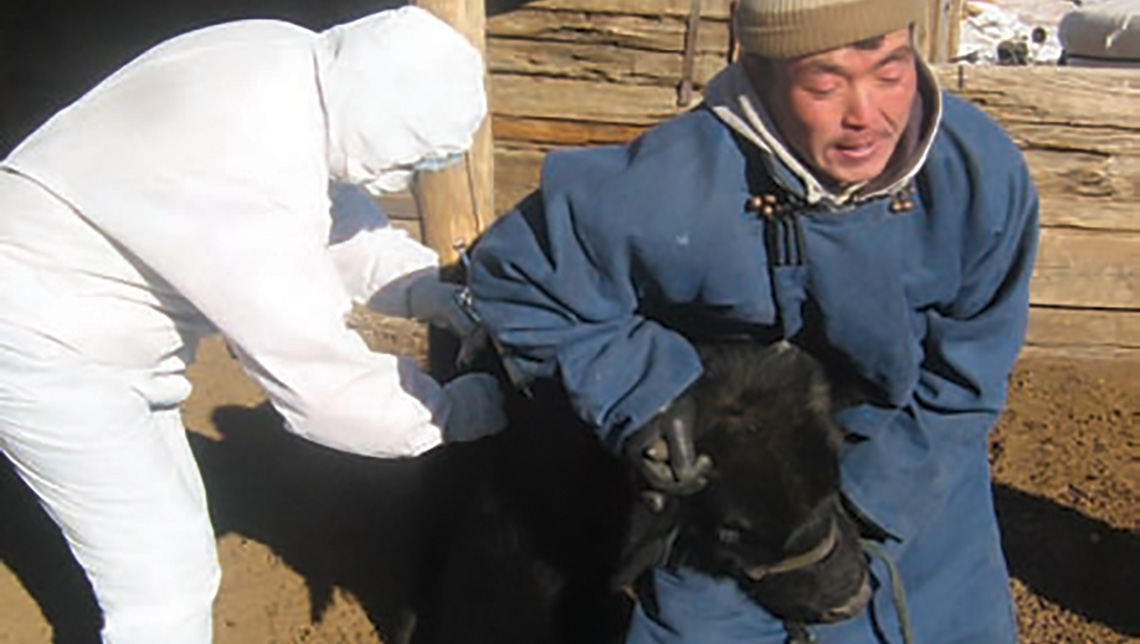During the winter of 2010, the Joint FAO/IAEA Division of Nuclear Techniques in Food and Agriculture received a host of correspondence from Mongolian herders with messages such as “Thank you, you saved my animals” and “We received vaccine from the local veterinary station. you make the difference.” It also received a message from the Mongolian government, offering its “sincere gratitude” for continued support. The reason for the outpouring of appreciation was the Joint FAO/IAEA Division’s herculean effort in thwarting an outbreak of foot-and-mouth disease (FMD) in Mongolia. In the big picture, the success of the effort grew out of more than two decades of partnership between the IAEA and the government of Mongolia.
The Joint FAO/IAEA Division of Nuclear Techniques in Food and Agriculture with support from the IAEA's Technical Cooperation Department began working with the Government of Mongolia in the late 1980s to identify areas where it could apply nuclear techniques to improve its livestock productivity. In the 1990s, it continued with a programme to introduce modern techniques for the diagnosis and control of infectious animal diseases. This included establishing a laboratory and training personnel to carry out nuclear and nuclear-related techniques to increase the proficiency of livestock disease diagnosis. The Joint Division also has worked with the sector to introduce isotope tracing to improve animal feeding schemes and breeding. As expected, this long-term effort by the government to improve the capability of its veterinary laboratories to deal with diagnosis and control of transboundary animal diseases made the difference – it meant that when FMD flared up in 2010, the country was prepared.
The livestock sector is a main pillar of the Mongolian economy with more than 43 million head of livestock in a country with a human population of only 3.1 million. However, it is also a country of extremely severe climate which can cause large variation in herd numbers.
At the start of each winter, most herders start moving their animals toward the capital city of Ulaanbaatar, often culminating with 20–30 million head kept in close proximity to the capital, hoping to increase the likelihood of their animals’ surviving the harsh weather. The winter of 2009–2010 was especially harsh and millions of animals died, while those that survived were often left weak and susceptible to disease.

